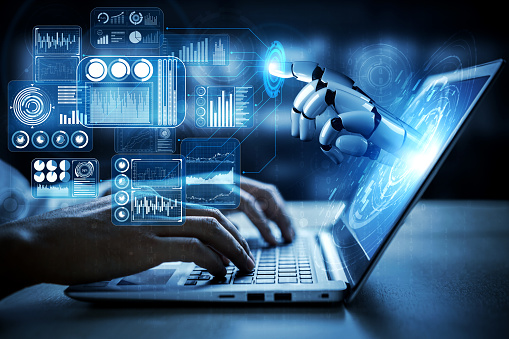Machine learning has increasingly made production simpler, better, and faster. Research shows that the ML market is expected to have a Compound Annual Growth Rate of 39.50% in 2022. Software development life cycle is one of the areas where machine learning is greatly used.
This process aims to produce superior software that meets and exceeds the customer’s expectations. ML offers an entirely new paradigm of the invention during the SDLC process. Here are different ways machine learning changes the essential part of the software development cycle. Thanks to machine learning and AI manual testing process has been replaced with test automation approach which reduces the human participation in the testing process which in it’s turn lowers the possibility of errors and bags.
Table of Contents
ToggleTesting Tools
Software development life cycle usually has numerous tests to fix bugs and other code-related issues. It’s a straightforward process because the software testers know how the machine is supposed to behave. If there is a match, then the testing process has passed. In case there is no match, the process has failed, and the bug has to be fixed by starting all over again.
With the market getting more complex and competitive, manual testing methods are becoming obsolete as they are not just enough to keep up with. The use of machine learning in software testing ensures accurate results and significantly reduces the probability of getting errors. The volume of data that can be tested can still grow without any additional burden on the testing team.
Code Review
Clean code is an essential part of the software development life cycle as it reduces the number of bugs during the process. For big companies, large-scale code refactoring is unavoidable. Refactoring means changing the program’s internal structure without changing its external functional behavior.
With ML, the software testers can automatically review the code and carry out optimization for performance purposes. Moreover, it makes it possible for the compilers to fix old code without the need for the original code.
Compilers are usually used to translate the computer code from a high-level programming language into machine language. Automating most of the tasks in this process makes code generation faster, unlike in the traditional manual code review process.
Smart Programming Assistants
In most cases, software developers spend a significant part of their time reading the technical document and debugging the code for the necessary improvements. The process is usually long as the testers have to reproduce the bug before changing the code, understand stack traces, write a test case and pair the program.
Machine learning provides just-in-time support and guidance relating to the text, code examples, and the best practices using the smart programming assistants. Smart programming assistants also learn from past experiences in finding errors and automatically flagging them during the development process. System logs can even be analyzed to identify these errors using the ML programs.
The growing concern for constantly checking system logs is becoming complex, especially with businesses growing at a high pace. As a result, research is being carried out to develop smart programming assistants that will let the software adjust to the errors without software testers’ intervention.
Bug Fixing
A bug is just an error in an application created during software development, and due to this, the software starts to show abnormal behaviors when used. Bug fixing is one of the areas that machine learning has a great impact on. Even though a procedure is followed during the SDLC process, it’s not easy for things to always run smoothly.
Different bugs build and arise with time during the development phase as the product undergoes different changes. Most defects are easily identified and resolved throughout the development process to have a quality product.
They are different states of a defect in the defect cycle, and they include new, assigned, open, pending retest, retest, and fixed. Machine learning algorithms can autocorrect all these bugs with a minor human intervention possible and thus makes it easier for the developers to create the software.
Rapid Prototyping
Prototyping is among the elements used in the software development process. This involves the iterative development and delivery of a very basic version of the client’s end-product. Prototypes allow the end-users to interact with the overall look and feel of the product under development.
As a result, the users can validate and give instant feedback on the specific features and processes of the SDLC. Most companies use the agile prototyping process due to the complexity of the modern data infrastructure.
It’s always hard to pinpoint the beginning and the end before getting inside the vicious circle of readjusting and redesigning. Without machine learning, it can take a long period to turn an idea into a product because of the many stages involved. ML has the potential to cut down this time with just a few technical errors.
Conclusion
Machine learning has a significant impact on the software development life cycle. That’s why software companies need to seriously consider the implications and the potential benefits that it offers when used. Indeed, it’s proving to be the game-changer in the software development process. There are various ways through which machine learning can change software development depending on the complexity of the organization, as discussed above. Each of the points mentioned carries a lot of weight and must be considered with a lot of care.
Shashi Teja
Related posts
Hot Topics
Understanding TruthFinder’s Background Check Features
Background checks have become increasingly relevant for personal safety and information gathering in digital environments. TruthFinder offers comprehensive background check…
How MLOps Is Shaping the Future of AI in Business
Artificial intelligence (AI) has evolved from a futuristic idea to a strategic necessity for companies looking to innovate, grow, and…



